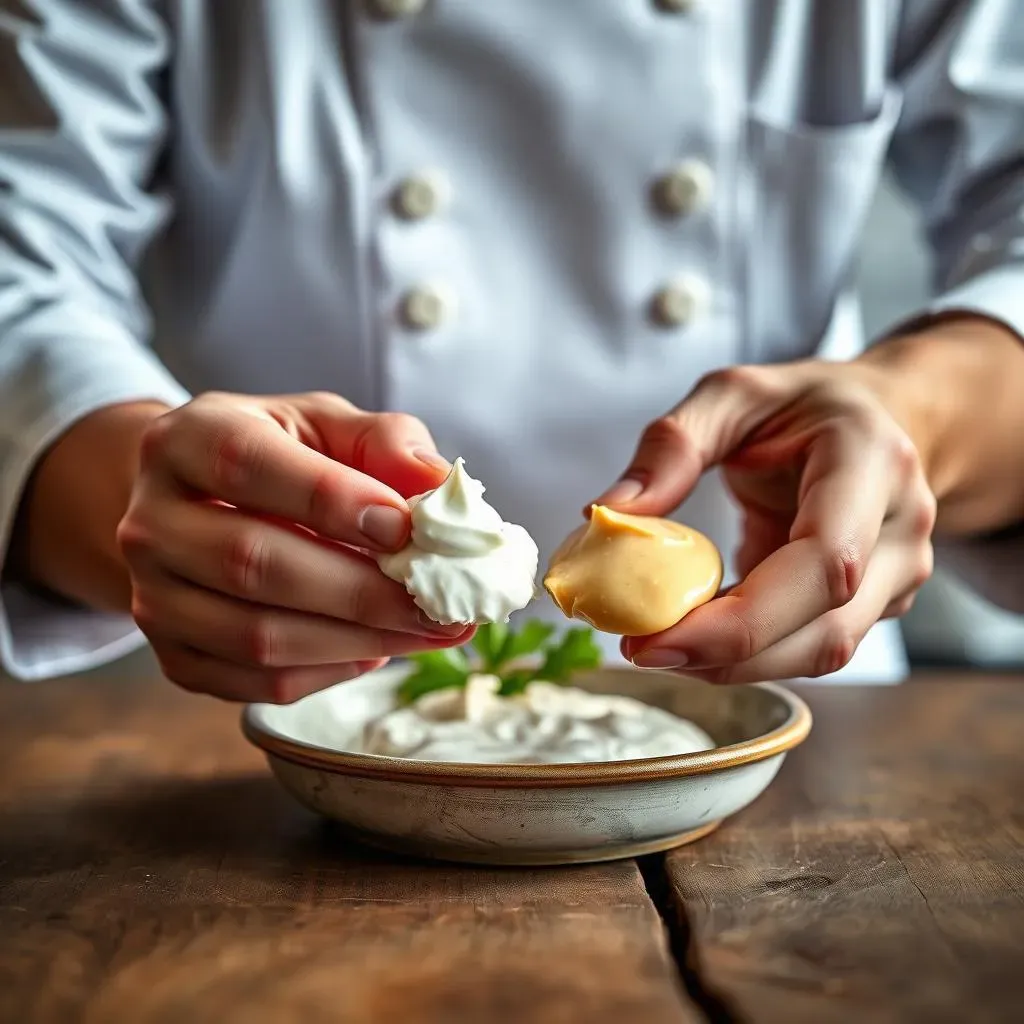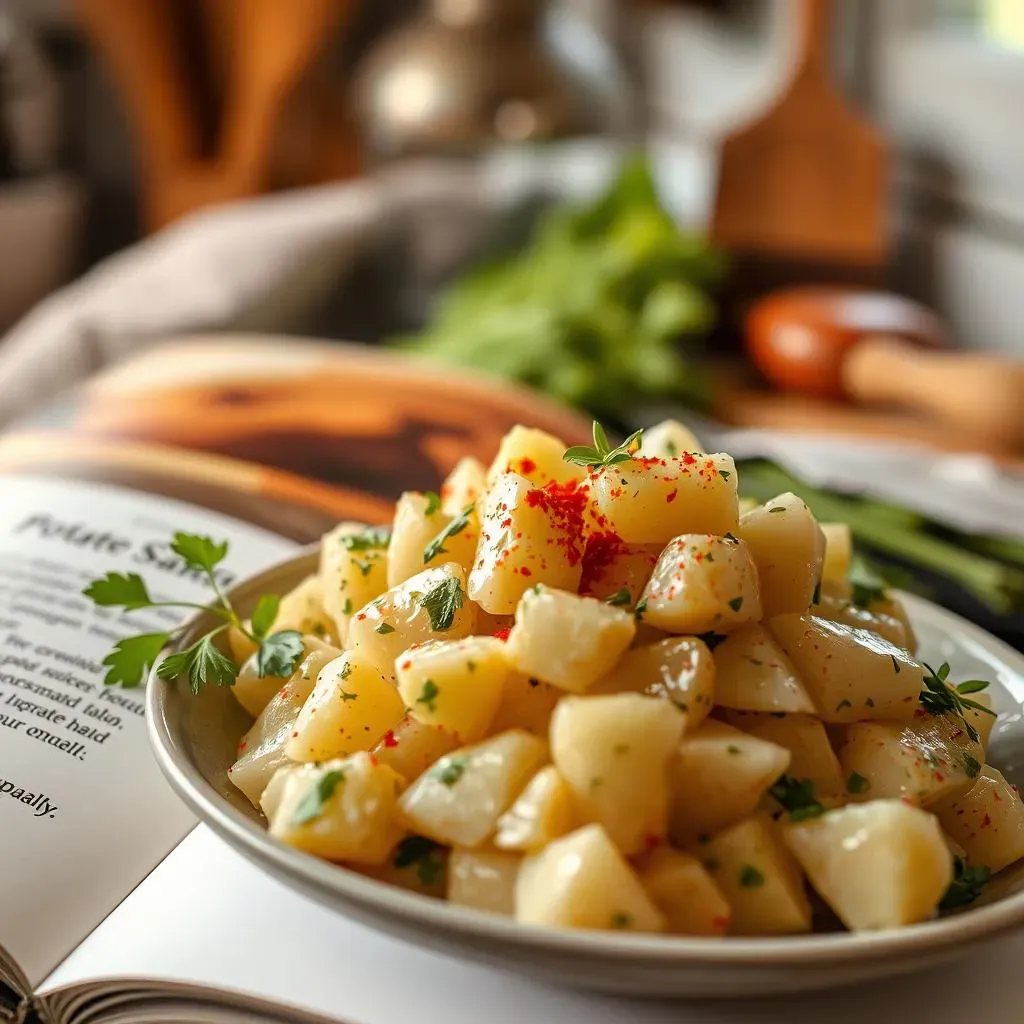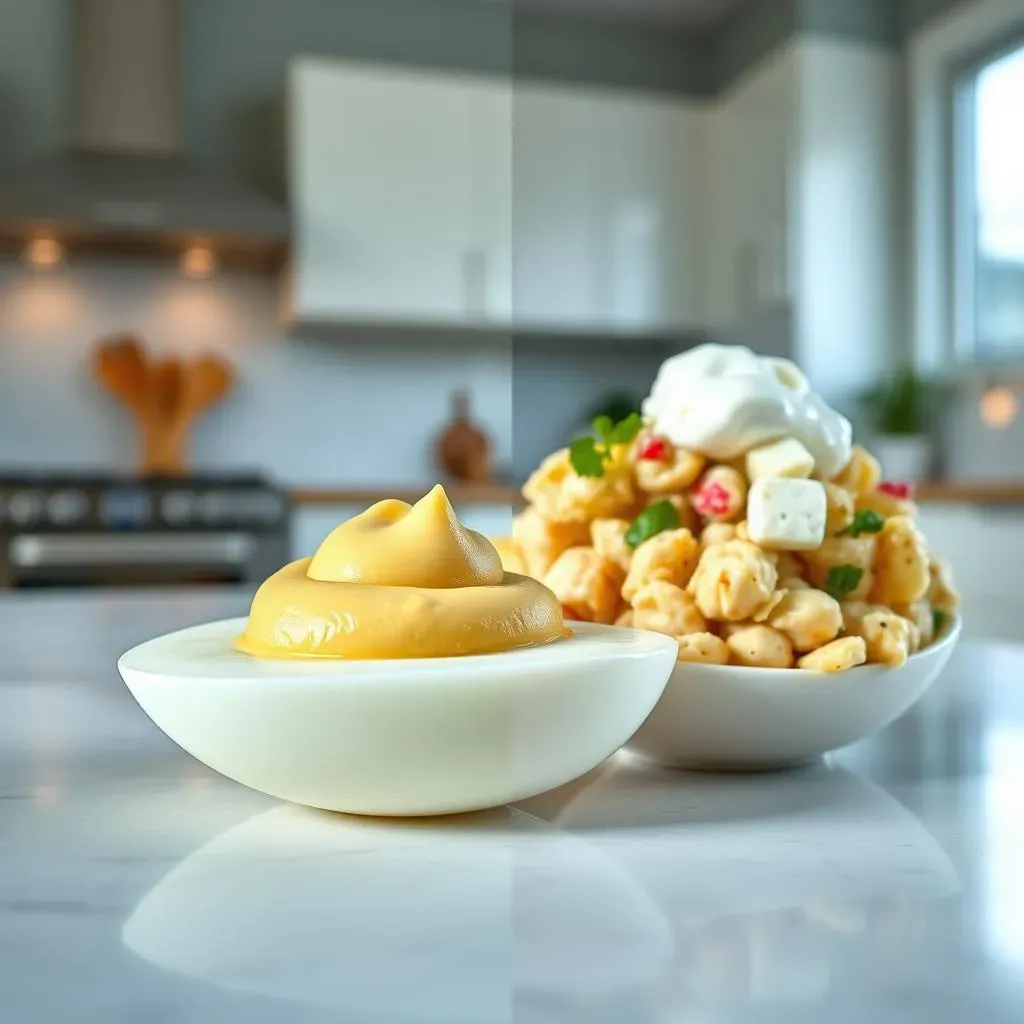Table of Contents
Ever stared into your fridge, recipe in hand, only to discover you're missing a key ingredient? That sinking feeling is especially frustrating when baking or cooking. Today, we tackle a common culinary question: can you substitute sour cream for mayo? This isn't just about a simple swap; it's about understanding the nuances of flavor, texture, and how these two creamy condiments behave in different recipes. This article will be your guide through this culinary conundrum. We'll dive into a taste test, comparing the two directly and examining their unique qualities. Next, we’ll explore practical applications, offering guidance on when a sour cream substitution works wonders and when it might fall flat. Finally, we'll put sour cream and mayo head-to-head in a recipe showdown, highlighting their strengths and weaknesses. By the end, you'll have the confidence to make informed decisions about whether or not to swap sour cream for mayo in your next masterpiece – or confidently decide to stick with the original recipe. Get ready to unlock the secrets to successful ingredient substitutions!
Can Sour Cream Replace Mayo? A Taste Test

Can Sour Cream Replace Mayo? A Taste Test
Texture Showdown: Creamy vs. Creamy-ish
Let's get one thing straight: both sour cream and mayonnaise are creamy. But that's where the similarities start to fade. Sour cream has a thicker, tangier consistency. Think of it as a luxurious cloud, while mayo is more of a smooth, almost silky emulsion. This difference in texture is crucial. In something like a dip, the thicker sour cream might hold its shape better, while in a dressing, the thinner mayo might create a more pourable consistency. The texture difference directly impacts how each works in recipes.
Consider this: would you rather have a thick, chunky potato salad or a smooth, creamy one? Your preference directly influences whether sour cream or mayo is the better choice. For example, many prefer a smooth, creamy coleslaw, making mayonnaise the better choice there. But a potato salad often benefits from the slightly thicker consistency of sour cream, providing a more substantial texture.
Ingredient | Texture | Typical Use |
|---|---|---|
Sour Cream | Thick, tangy | Dips, toppings, baked goods |
Mayonnaise | Smooth, emulsified | Dressings, sauces, sandwiches |
Flavor Face-Off: Tangy vs. Mildly Eggy
The flavor profiles of sour cream and mayonnaise are worlds apart. Sour cream boasts a distinct, sharp tang thanks to its cultured dairy base. It's that zesty kick that brightens up dishes. Mayonnaise, on the other hand, offers a milder, more neutral flavor. The taste is often described as subtly eggy and slightly acidic, but it mostly provides a creamy backdrop to other flavors. This fundamental difference in taste dictates how each ingredient functions in a recipe.
Imagine a taco salad. The tang of sour cream cuts through the richness of the cheese and meat, adding a refreshing contrast. Now, picture a tuna salad sandwich. The mildness of mayo lets the tuna's flavor shine, without overpowering it with a strong taste. The key is to choose the ingredient that complements, rather than competes with, the other flavors in your dish.
- Sour cream: Tangy, slightly acidic
- Mayonnaise: Mildly eggy, creamy
The Verdict: It Depends!
So, can sour cream replace mayo? The answer, my friend, is a resounding "maybe." It all hinges on the specific recipe. If you're looking for a creamy, tangy addition to your dish, sour cream might be a great choice. However, if you need a smooth, neutral base for other flavors, mayonnaise is the way to go. The best approach is to consider the desired texture and flavor profile of your final product before making the swap. Experimentation is key!
Don't be afraid to get creative! Sometimes, a blend of both sour cream and mayonnaise can achieve the perfect balance of texture and flavor. Start with small substitutions, taste as you go, and don't be afraid to adjust the recipe to suit your palate. Happy cooking!
Substituting Sour Cream for Mayo: Recipes and Considerations

Substituting Sour Cream for Mayo: Recipes and Considerations
Swapping Strategies: When Sour Cream Works (and When It Doesn't)
Alright, let's get practical. Substituting sour cream for mayo isn't a one-size-fits-all solution. Think of it like this: you wouldn't wear flip-flops to a formal wedding, right? Similarly, sour cream won't always be the right choice for every recipe calling for mayonnaise. Its thicker texture and tangier flavor will drastically alter the final product. Let's explore some recipe categories where the swap might be successful or a complete culinary disaster.
- Successful Swaps: Dips (like French onion dip or a veggie dip), certain potato salads (where a thicker consistency is desired), and some baked goods (where sour cream adds moisture and a slight tang).
- Recipes to Avoid: Classic mayonnaise-based dressings (like Caesar or thousand island), sauces that need a smooth, pourable consistency, and anything where the delicate balance of flavors would be disrupted by the sour cream's tang.
Recipe Adjustments: Fine-Tuning for Flavor and Texture
Even when a substitution *seems* plausible, you often need to make adjustments. Sour cream is thicker than mayo, so you might need to add a bit of milk or water to thin it out to the desired consistency. Its tanginess can also be a game-changer. If the recipe relies on the mildness of mayo, you might need to reduce the amount of sour cream used or add a touch of sugar to balance the acidity. Remember, taste as you go!
Recipe Type | Substitution Tips | Potential Issues |
|---|---|---|
Dips | Use a 1:1 ratio; adjust consistency with milk or water. | Might be too thick; consider adding herbs or spices to compensate for the tang. |
Potato Salad | Use a 1:1 ratio; might need to add more liquid for desired consistency. | Texture might be too heavy; consider adding a touch of mustard to balance flavors. |
Baked Goods | Use a 1:1 ratio, but be mindful of the increased tang. | Might affect the overall sweetness; adjust sugar accordingly. |
Sour Cream vs. Mayo: The Ultimate Showdown for Your Recipes

Sour Cream vs. Mayo: The Ultimate Showdown for Your Recipes
Recipe Face-Off: Real-World Examples
Let's move beyond the theoretical and delve into the real world of cooking. We'll explore specific recipes where the sour cream versus mayo debate really comes to a head. Imagine you're making deviled eggs. The classic recipe calls for mayonnaise, and for good reason. The smooth, creamy texture of mayo creates a perfect, almost mousse-like filling. Sour cream, with its thicker consistency and tang, would create a completely different – and arguably less desirable – outcome. The filling would be denser, the flavor sharper, and the overall experience altered significantly.
Now, let's switch gears and consider a potato salad. Here, the choice between sour cream and mayonnaise is far less clear-cut. Many prefer the tang and slightly thicker texture of sour cream in their potato salad, while others remain loyal to the smooth, creamy embrace of mayonnaise. The truth is, both can work brilliantly, depending on personal preference. This highlights the importance of considering your individual tastes and preferences when making the swap.
Recipe | Sour Cream | Mayonnaise |
|---|---|---|
Deviled Eggs | Too thick, tangy; alters texture and flavor negatively. | Classic choice; creates smooth, creamy filling. |
Potato Salad | Adds tang and thicker texture; a popular alternative. | Creates a smooth, creamy salad; a classic choice. |
Beyond the Basics: Creative Substitutions
While some substitutions are straightforward, others require more creativity. Let's say your recipe calls for a creamy sauce, but you only have sour cream. You can't simply swap in sour cream for mayo and expect the same results. However, with a few strategic adjustments, you can achieve a similar effect. Consider adding a touch of lemon juice to enhance the acidity, some finely chopped herbs for extra flavor, and a little milk or water to adjust the consistency. Don't be afraid to experiment!
The beauty of cooking lies in its flexibility. Don't let the lack of a specific ingredient stifle your creativity. By understanding the fundamental differences between sour cream and mayonnaise—their texture, flavor, and how they behave in different recipes—you can confidently make substitutions and create culinary masterpieces, even when faced with unexpected ingredient shortages.
- Assess the recipe's needs: Texture, flavor profile, and overall outcome.
- Consider the potential impact of the substitution.
- Adjust accordingly: Thin with liquid, add herbs or spices, or adjust sweetness.